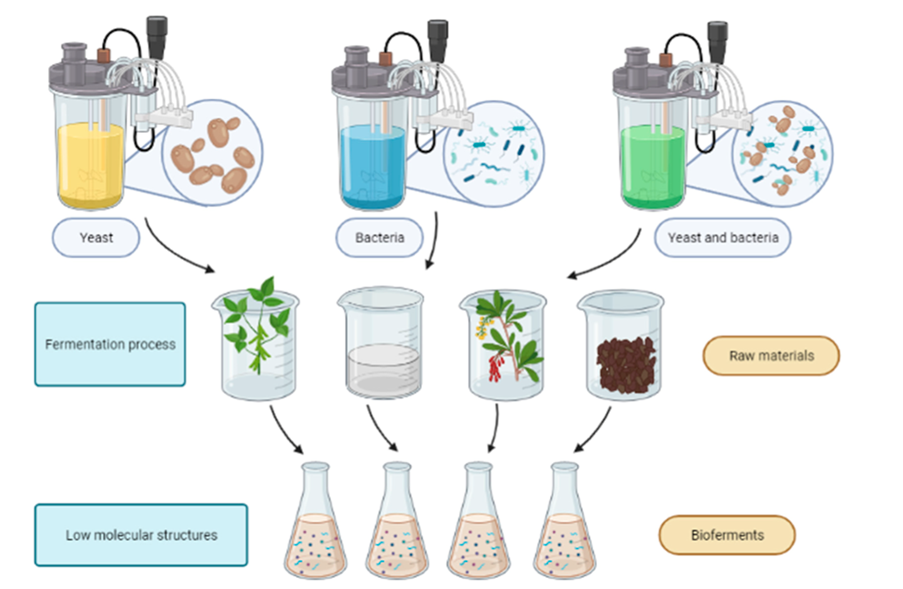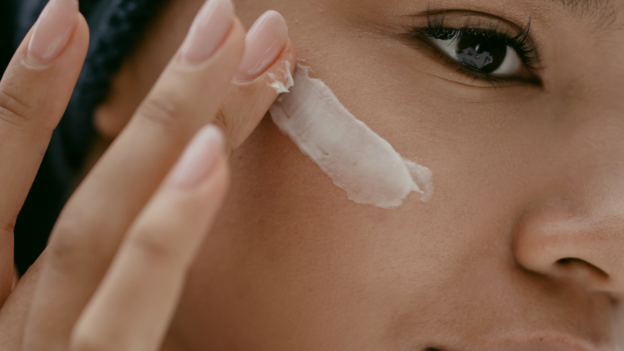When we hear the word “fermented”, the first thing that comes to mind is food such as yogurt, kimchi, miso, or kombucha. Fermentation is a processing technique used to preserve food or to make it more nutritious. Here, the beneficial microbes break down sugars and starch into alcohols and acids.1 It is a natural, chemical process that can occur with or without air. The general scheme is as follows2:
Carbohydrates + Microorganisms CO2 + Metabolites
Interestingly, fermented skincare has become a big beauty trend in recent years. Its popularity is especially high in Japan and Korea. What could this hype be all about?
Connecting the dots
It is quite interesting to note that fermenting is not entirely new in the cosmetic industry. In fact, some of the commonly used functional skincare ingredients such as Xanthan Gum and Sclerotium Gum are commercially produced by the fermentation process. The current trend, on the other hand, uses fermentation to process cosmetic raw materials. This technique is believed to have been inspired by the idea that fermentation causes an increase in the total content of the active component making the final product more potent.3 Other potential benefits of fermented active ingredients include:
- Increasing the actives’ bioavailability – fermentation breaks down molecules into smaller forms which enable them to penetrate deeper into the skin.4
- Maintaining the skin microbiome equilibrium – fermentation produces probiotics that help balance the level of bad and good bacteria in the skin.5
However, the context is quite complex and is highly dependent on the actual raw material that is being fermented and the type of microorganism used.
The “Bioferments” factory
The development of fermented skincare actives or also commonly called “bioferments” is similar to that of the process in food. The main ingredient involved is the microorganism added which releases enzymes to break down the ingredients.2,6 The choice of the microorganism strain and the processing condition drive the fermentation process and define the matrix of active compounds. The commonly used strains are Saccharomyces sp., Lactobacillus sp., and Bacillus sp. In some cases, researchers have also tried mixing bacteria strains for fermentation and found a synergistic effect.6 This makes biofermentation almost a limitless technique. Figure 1 shows the general scheme of the fermentation process.

From concept to formulation
Because of the wide number of choices of fermented actives nowadays, it could be overwhelming for the selection process. However, it’s also like choosing an active ingredient for your formula wherein you start with your working concept/claim. A review6 showed that there are three main groups of bioferments based on their properties. They are as follows:
| Main Property | Fermented material |
| Antioxidant (associated with whitening and skin tone leveling properties) | Berries (goi berry, blackberry), soya, lemon peel, a mixture of herbs |
| Anti-aging and Anti-wrinkle | Red and black ginseng, Citrus uishu peel, tonka bean, mannitol, maltodextrin |
| Moisturizing | Aloe, Sea kelp, skim milk, soybean milk |
The bioferments in the raw material market are also quite specific in terms of their claims. In general, the suppliers also categorize their fermented actives based on the main target skin concern. Still, many of these have multifunctional claims given that the bioferment itself is a concoction of various active biomolecules. For instance, Hyundai Bioland is offering an active called SENAS which claims to be moisturizing, whitening boosting, and skin brightening. SENAS is an Aspergillus ferment with rice. Bloomage Biotech offers Bioyouth™-Natto, using soybean as the main substrate, which is said to be anti-inflammation and anti-aging. According to the supplier, it is rich in plant collagen, soybean peptides, amino acids, lactic acid, isoflavone, vitamins, coenzyme Q10, and Superoxide Dismutase. Although some may sound to be over-promising, what’s important is to always check the efficacy data of these raw materials to understand if they have been thoroughly studied by the suppliers.
Formulation-wise, it is also not complicated to work with these raw materials, in general. Most of them are water-soluble and are at a pH range that is skin-friendly. They are also usually added at the end of the formulation process below the temperature of 40°C.
Other benefits that matter
Aside from the many advantages fermented products have for the skin, they also come with sustainable claims. Because of the nature of the processing technique, it enables a lower need for starting materials which are mostly harvested from nature. This also leads to a reduced carbon footprint, low land usage, and cleaner technology.6,7 It is safe to say that bioferments are multifaceted actives that are worthy of their hype. It is something worth considering for your next skincare project.
Bibliography
| [1] | MasterClass, “Masterclass.com,” 30 September 2021. [Online]. Available: https://www.masterclass.com/articles/what-is-fermentation-learn-about-the-3-different-types-of-fermentation-and-6-tips-for-homemade-fermentation. [Accessed 26 March 2023]. |
| [2] | C. Meier, “mibellebiochemistry.com,” 18 February 2022. [Online]. Available: https://mibellebiochemistry.com/fermented-beauty. [Accessed 26 March 2023]. |
| [3] | A. Otsuka, C. Moriguchi, Y. Shigematsu, K. Tanabe, N. Haraguchi, S. Iwashita, Y. Tokudume and H. Kitagaki, “Fermented Cosmetics and Metabolites of Skin Microbiota—A New Approach to Skin Health,” Fermentation, vol. 8, no. 12, p. 703, 2022. |
| [4] | C. Shatzman, “Forbes.com,” 29 March 2022. [Online]. Available: https://www.forbes.com/sites/celiashatzman/2022/03/29/everything-you-need-to-know-about-fermented-skincare-and-the-best-products/?sh=fd1d4755c322 . [Accessed 26 March 2023]. |
| [5] | Beauty and the Biome, “beautyandthebiome.co.nz,” 7 April 2022. [Online]. Available: https://beautyandthebiome.co.nz/the-benefits-of-fermented-ingredients-in-skincare/. [Accessed 27 March 2023]. |
| [6] | W. Majchrzak, I. Motyl and K. Smigielski, “Biological and Cosmetical Importance of Fermented Raw Materials: An Overview,” molecules, vol. 27, p. 4845, 2022. |
| [7] | E. Canadas, “Fermentation, the Answer for Sustainable Cosmetics,” SOFW.com, 2022. |

